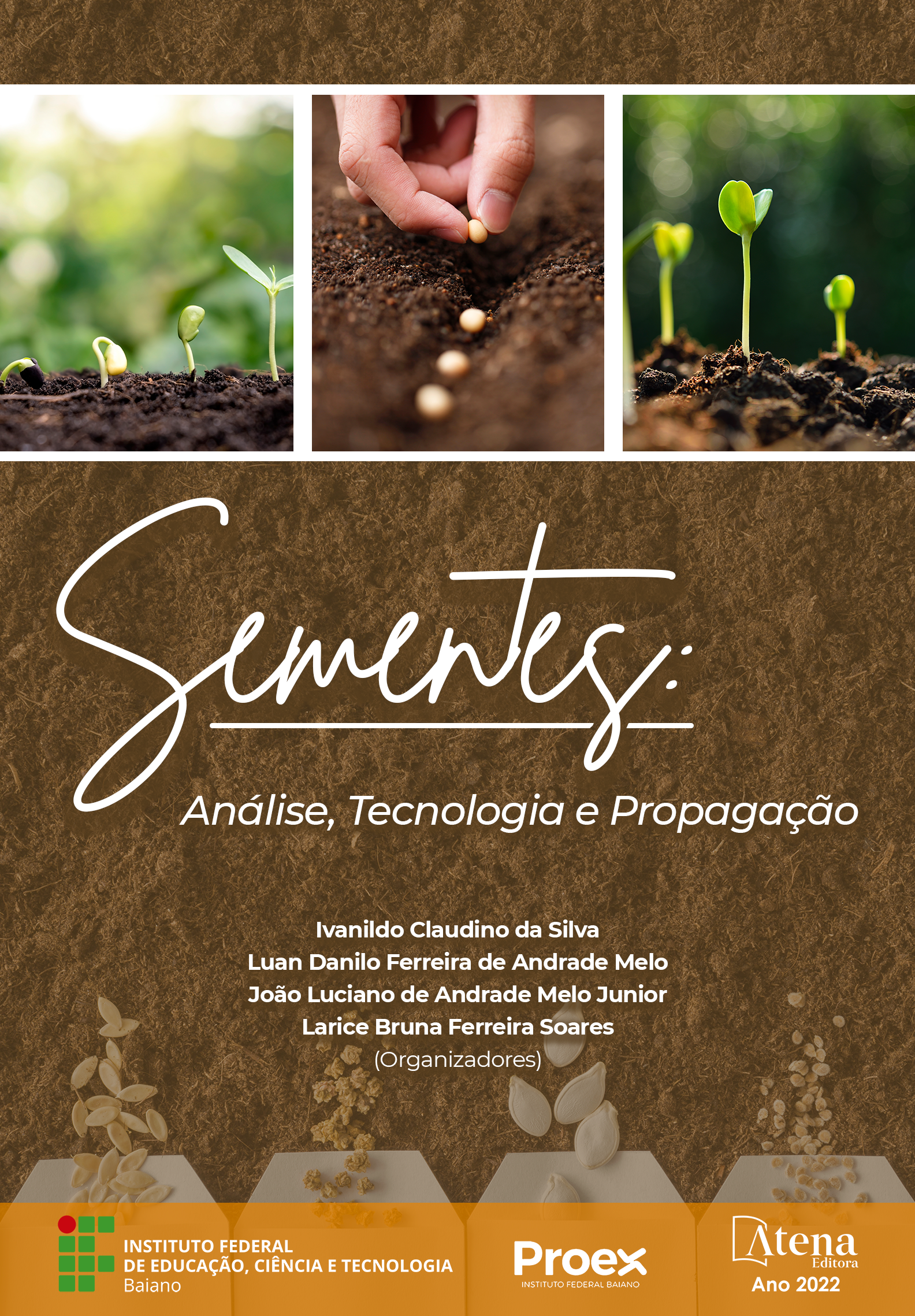
4. ECOFISIOLOGIA DA GERMINAÇÃO DE SEMENTES DE Euphorbia hyssopifolia Lam.
Euphorbia hyssopifolia Lam. é uma espécie de planta daninha herbácea anual, se reproduzindo exclusivamente por meio de sementes, que se desenvolve em todo país, causadora de danos diretos e indiretos em cultivos agrícolas. O objetivo do trabalho foi avaliar o efeito de diferentes filtros de luz, temperatura e profundidade de semeadura sobre a germinação de sementes de E. hyssopifolia. No primeiro experimento, foi avaliado o comportamento germinativo da espécie nas temperaturas de 20°C, 25°C, 30°C e 20-30˚C na ausência, presença de luz, vermelho e vermelho distante, sendo conduzido no delineamento inteiramente casualizado, no esquema fatorial 4 x 4 (temperaturas x tipos de luminosidade), em quatro repetições. Já no segundo, avaliou-se o comportamento germinativo da espécie sob diferentes profundidades de semeadura (0, 2, 4 e 8cm) nas condições de sol pleno e 50% de luminosidade em casa de vegetação, também conduzido no delineamento inteiramente casualizado, no esquema fatorial 4 x 2 (profundidade de semeadura x condição de luminosidade), em quatro repetições. As variáveis analisadas no primeiro ensaio foram taxa de germinação (TG), índice de velocidade de germinação (IVG) e tempo médio de germinação (TGM). No segundo ensaio foi avaliada apenas a porcentagem de germinação das sementes. Os dados obtidos foram submetidos à análise variância e as médias comparadas pelo teste de Tukey ao nível de 5% de significância. A temperatura alternada (20-30°C) foi a que proporcionou as maiores taxas de germinação, índice de velocidade de germinação e tempo médio de germinação em todas as qualidades luminosas em que as sementes foram submetidas, contudo, o fornecimento da luz branca apresentou taxas mais elevadas. Na avaliação da germinação das sementes em diferentes profundidades de semeadura e condição de luminosidade, observou-se que não houve interação significativa entre os fatores avaliados, porém a profundidade de semeadura influenciou significativamente na germinação das sementes, sendo a maior taxa observada na profundidade de 8,0 cm, na condição de 100% de luminosidade. A espécie apresentou um comportamento fotoblástico positivo e negativo, sendo este conhecimento de extrema importância para o desenvolvimento de estratégias eficazes de manejo de E. hyssopifolia nos campos de produção agrícola.
4. ECOFISIOLOGIA DA GERMINAÇÃO DE SEMENTES DE Euphorbia hyssopifolia Lam.
-
DOI: 10.22533/at.ed.1552204054
-
Palavras-chave: burra leiteira, regime de luz, temperatura, profundidade.
-
Keywords: dairy donkey, light regime, temperature, depth.
-
Abstract:
Euphorbia hyssopifolia Lam. is a species of annual herbaceous weed, reproducing exclusively through seeds, which develops throughout the country, causing direct and indirect damage to agricultural crops. The objective of this work was to evaluate the effect of different filters of light, temperature and sowing depth on the germination of E. hyssopifolia seeds. In the first experiment, the germination behavior of the species was evaluated at temperatures of 20°C, 25°C, 30°C and 20-30°C in the absence, presence of light, red and far red, being carried out in a completely randomized design, in the 4 x 4 factorial scheme (temperatures x types of luminosity), in four replications. In the second, the germination behavior of the species was evaluated under different sowing depths (0, 2, 4 and 8 cm) in full sun and 50% light conditions in a greenhouse, also conducted in a completely randomized design, in the 4 x 2 factorial (seeding depth x light condition), in four replications. The variables analyzed in the first trial were germination rate (TG), germination speed index (IVG) and mean germination time (TGM). In the second trial, only the germination percentage of the seeds was evaluated. The data obtained were submitted to analysis of variance and the means were compared by the Tukey test at a 5% significance level. The alternating temperature (20-30°C) was the one that provided the highest germination rates, germination speed index and average germination time in all light qualities in which the seeds were submitted, however, the supply of white light showed higher rates. In the evaluation of seed germination at different sowing depths and light conditions, it was observed that there was no significant interaction between the evaluated factors, but the sowing depth significantly influenced the seed germination, with the highest rate observed at the depth of 8 .0 cm, in the condition of 100% brightness. The species showed a positive and negative photoblastic behavior, and this knowledge is extremely important for the development of effective strategies for the management of E. hyssopifolia in agricultural production fields.
-
Número de páginas: 21
- Everton Ferreira dos Santos
- Élida Fernanda Calvalcanti Marins
- Auridete Maria de Oliveira Correia
- Taís Macêdo Santos
- Renan Cantalice de Souza
- João Correia de Araújo Neto
- Ivanildo Claudino da Silva


